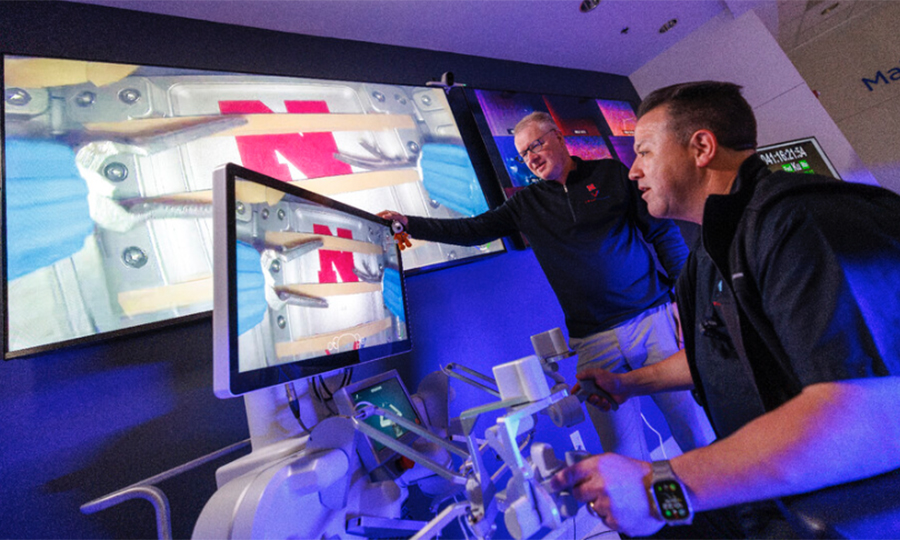Calendar Icon
Feb 14, 2024
![]() RSS
Submit a Story
RSS
Submit a Story

RELATED LINKS
In a test that featured half a dozen surgeons from across the United States, a miniature robot created at the University of Nebraska–Lincoln successfully completed a surgical simulation aboard the International Space Station.
Six surgeons took turns guiding the robot using hand and foot controls from a console at the Lincoln headquarters of Virtual Incision, a private company created to develop the MIRA robot.
MIRA — which stands for Miniaturized In Vivo Robotic Assistant — was developed under the leadership of UNL’s Shane Farritor, Lederer Professor of Engineering and a Virtual Incision co-founder. It is the world’s only small form factor robotic-assisted surgery device. The Nebraska research team leveraged MIRA’s unique design to create spaceMIRA, an iteration that allows pre-programmed as well as long-distance remote surgery operation.
“SpaceMIRA’s success at a space station orbiting 250 miles above Earth indicates how useful it can be for health care facilities on the ground,” Farritor said.
Submit a Story